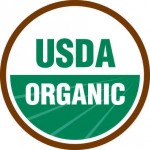Ack! Suddenly I have more to do than I have time! That means I’m way behind in all the food things I want to tell you about, like the Rustic Peach Tart and the Ratatouille and the Naturally Nutritious Food Festival and the free food and the Easy Oven-Roasted Tomato Sauce and the great-tasting dish I made from all-local food last weekend. Gasp.
That being the case, look for shorter posts (perhaps a relief for you?) for a while, but I’ll try to maintain frequency. For today, I offer up little commentary but lots of photos from the Douglas County Fair and the Naturally Nutritious Food Festival, of which I was privileged to be a judge. This was the 20th edition of the festival the Community Mercantile sponsors, and it drew 56 entries. Many, if not most, of the entries were really, really good and shatter anyone’s prejudice that good-tasting means bad for you.
Here’s a slideshow, or click through to the set on Flickr.
Watch for winners’ recipes in the Merc News.
News items
WIC adds fruits and vegetables-and not a decade too soon. (Newton Kansan)
Last chance to vote for your favorite (mine’s the Downtown Lawrence Farmers Market) farmers market in the American Farmland Trust vote. (Click here for the latest standings.)
And don’t forget the tomato tasting tomorrow at the Downtown Lawrence Farmers Market!
More later!!






